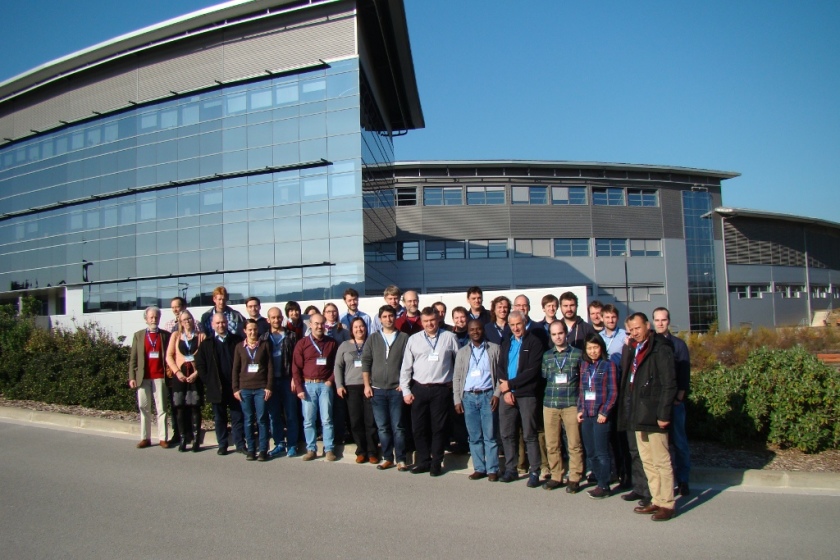Common platform for macromolecular crystallography at European synchrotrons

MXcuBE Meeting from 1st - 2nd of December 2015 at Alba, Barcelona. The meetings make sure that the devenlopment of MXcuBE3 closly fits to the needs of the users.
Photo: Jordi Juanhuix/ALBA
Researchers use high-intensity X-ray light from synchrotron radiation sources to decipher the structures of biological molecules and thus the blueprints of life. A cooperation agreement has been effective since 2012 to establish common software standards at several European sources. Its aim: The eight synchrotrons involved want to create user-friendly, standardised conditions at the 30 experimental stations for macromolecular crystallography, which will greatly facilitate the work of research groups. In the new project “MXCuBE3”, the existing software platform is being adapted to include the latest developments in technology.
Many of the beamlines for macromolecular crystallography have been extensively modernised at various synchrotrons over the past few years. With new equipment, such as the latest high-resolution detectors, this opens up all new possibilities for experimentation. The common software platform MXCuBE2 now has to be adapted as well to keep up with this trend. The Curatorship has accordingly called for a new, overhauled version to be developed. The software solution MXCuBE3 will allow users to control their experiments via web applications. The upgrade will also guarantee MXCuBE3 will continue to run on computers with future operating systems, and will improve the connection to the sample database ISPyB.
Involved in the cooperation are the Helmholtz-Zentrum Berlin, the ESRF, the European Molecular Biology Laboratory, Global Phasing Limited, MAX-VI-Lab in Sweden, SOLEIL in France, ALBA in Spain and DESY.
Read up on this in more detail in the ESRF magazine
(sz)
https://www.helmholtz-berlin.de/pubbin/news_seite?nid=14380;sprache=en
- Copy link
-
Bright prospects for tin perovskite solar cells
Perovskite solar cells are widely regarded as the next generation photovoltaic technology. However, they are not yet stable enough in the long term for widespread commercial use. One reason for this is migrating ions, which cause degradation of the semiconducting material over time. A team from HZB and the University of Potsdam has now investigated the ion density in four different, widely used perovskite compounds and discovered significant differences. Tin perovskite semiconductors produced with an alternative solvent had a particular low ion density — only one tenth that of lead perovskite semiconductors. This suggests that tin-based perovskites could be used to make solar cells that are not only really environmentally friendly but also very stable.
-
Synchrotron radiation sources: toolboxes for quantum technologies
Synchrotron radiation sources generate highly brilliant light pulses, ranging from infrared to hard X-rays, which can be used to gain deep insights into complex materials. An international team has now published an overview on synchrotron methods for the further development of quantum materials and technologies in the journal Advanced Functional Materials: Using concrete examples, they show how these unique tools can help to unlock the potential of quantum technologies such as quantum computing, overcome production barriers and pave the way for future breakthroughs.
-
How carbonates influence CO2-to-fuel conversion
Researchers from the Helmholtz Zentrum Berlin (HZB) and the Fritz Haber Institute of the Max Planck Society (FHI) have uncovered how carbonate molecules affect the conversion of CO
2 into valuable fuels on gold electrocatalysts. Their findings reveal key molecular mechanisms in CO
2 electrocatalysis and hydrogen evolution, pointing to new strategies for improving energy efficiency and reaction selectivity.
